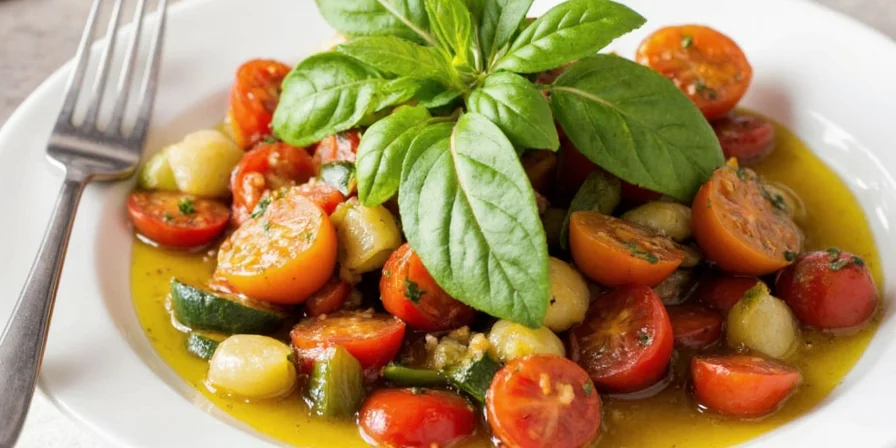From Boring to Brilliant: 7 Mind-Blowing Tips to Elevate Your Italian Marinated Vegetables
If you’ve ever tasted Italian marinated vegetables at a rustic trattoria in Tuscany or picked up a jar from your local gourmet store, you know the magic lies in the perfect balance of flavor, texture, and that unmistakable Mediterranean charm. But what if I told you your homemade version could be just as good — if not better? 🥒🍅
In this article, we’ll take you on a culinary journey through Italy’s favorite preserved side dish, unpack some pro tips to make your marinade sing, and show you how even the humblest vegetable can become a flavor-packed superstar.
Table of Contents
- What Are Italian Marinated Vegetables?
- Why You Should Be Making Them at Home
- Top 7 Game-Changing Tips for Better Marinated Veggies
- Spice Breakdown: The Flavor Essentials
- The Marinade Equation: Oil, Vinegar, Herbs & Time
- Storage & Shelf Life: How Long Do They Last?
- Serving Suggestions: Beyond the Antipasto Platter
- Final Thoughts
What Are Italian Marinated Vegetables?
Known in Italy as “Verdure Sott’olio” or simply “marinated vegetables,” these are typically a mix of roasted or blanched vegetables preserved in oil, vinegar, herbs, and spices. Common ingredients include bell peppers, eggplant, zucchini, carrots, mushrooms, cauliflower, artichokes, and even green beans.
While recipes vary regionally, they all share one thing: a vibrant, tangy, garlicky profile that makes them irresistible. Often served as an antipasto, on crostini, or alongside cheeses and cured meats, they’re a staple of Italian pantries.
Why You Should Be Making Them at Home
- Freshness: Store-bought versions often rely on preservatives and salt to extend shelf life.
- Customization: Make it your own with your favorite veggies and spice blends.
- Eco-Friendly: Reduce plastic waste by reusing jars instead of buying pre-packaged options.
- Cheaper: Buy seasonal produce and preserve it for later use.
Top 7 Game-Changing Tips for Better Marinated Veggies
- Pick the Right Produce: Fresher is better. Opt for firm, blemish-free vegetables without bruises or soft spots.
- Prep Like a Pro: Cut vegetables into uniform sizes so they cook and marinate evenly.
- Blanch, Roast, or Grill: Each method adds a different depth. Try roasting for smoky sweetness or blanching for crunch.
- Salt Generously (Then Rinse): Salt draws out moisture, especially from eggplant. Rinse before marinating to avoid over-salting.
- Use Quality Oils & Vinegars: Don’t skimp on olive oil or vinegar. This is where most of the flavor comes from.
- Toast Spices Before Adding: Toasting garlic, chili flakes, and peppercorns intensifies their aroma.
- Patience Pays Off: Let the vegetables rest in the fridge for at least 24–48 hours before serving for full flavor absorption.
Spice Breakdown: The Flavor Essentials
Italian marinated vegetables wouldn’t be the same without the classic herb and spice combo. Here's what goes into making them sing:
| Spice/Herb | Role | Taste Profile | Substitutes |
|---|---|---|---|
| Oregano | Earthy backbone | Herbaceous, slightly bitter | Thyme (milder), marjoram |
| Basil | Freshness boost | Grassy, sweet | Italian parsley |
| Bay Leaf | Slow-building depth | Woody, savory | Thyme sprigs |
| Garlic | Umami bomb | Pungent, sharp | Shallots (milder) |
| Black Pepper | Spicy warmth | Peppery, bold | Coriander seeds |
| Red Chili Flakes | Heat kick | Spicy, earthy | Crushed red pepper |
The Marinade Equation: Oil, Vinegar, Herbs & Time
The secret sauce isn’t really a secret — it’s all about proportions and time. Here’s a basic formula to get you started:
- Olive Oil: 3 parts
- Vinegar (white wine or apple cider): 1 part
- Garlic: Thinly sliced or crushed cloves (2–3 per cup of veg)
- Spices: 1 tsp each of oregano, basil, and black pepper; ½ tsp red chili flakes
- Optional: Lemon zest, fennel seeds, mustard seeds, bay leaves
Mix everything together and pour over warm, freshly cooked vegetables. Seal and refrigerate for 1–2 days before serving for best results.
Storage & Shelf Life: How Long Do They Last?
When properly sealed and stored in the refrigerator, homemade Italian marinated vegetables can last for up to **two weeks**. If you want to extend their shelf life, consider water bath canning, but be sure to follow safe preservation practices.
- Always use clean utensils when scooping out vegetables to avoid cross-contamination.
- If the oil level drops below the veggies, top it off to keep them submerged.
- Don’t reuse old marinade once it’s been exposed to room temperature or used vegetables.
Serving Suggestions: Beyond the Antipasto Platter
While marinated vegetables are a natural fit for antipasti, here are a few creative ways to enjoy them:
- On Crostini: Spread goat cheese or ricotta on toasted bread and top with veggies.
- In Sandwiches: Add flair to sandwiches, paninis, or wraps.
- With Eggs: Spoon over scrambled eggs or shakshuka for a flavor pop.
- As a Pizza Topping: Great on white pizzas or focaccia.
- With Grilled Meats: Pair with grilled steak, chicken, or lamb for a refreshing contrast.

Final Thoughts
Italian marinated vegetables aren't just a condiment — they're a celebration of simplicity, tradition, and bold flavors. With just a few quality ingredients and a little patience, you can transform everyday veggies into something truly special.
Whether you're new to the world of pickling and preserving or a seasoned kitchen wizard looking for inspiration, mastering the art of marinated vegetables will elevate your pantry game and impress your guests at every dinner party.
So go ahead, roast those bell peppers, slice that eggplant, and let the magic happen in that jar. Your taste buds will thank you!










 浙公网安备
33010002000092号
浙公网安备
33010002000092号 浙B2-20120091-4
浙B2-20120091-4